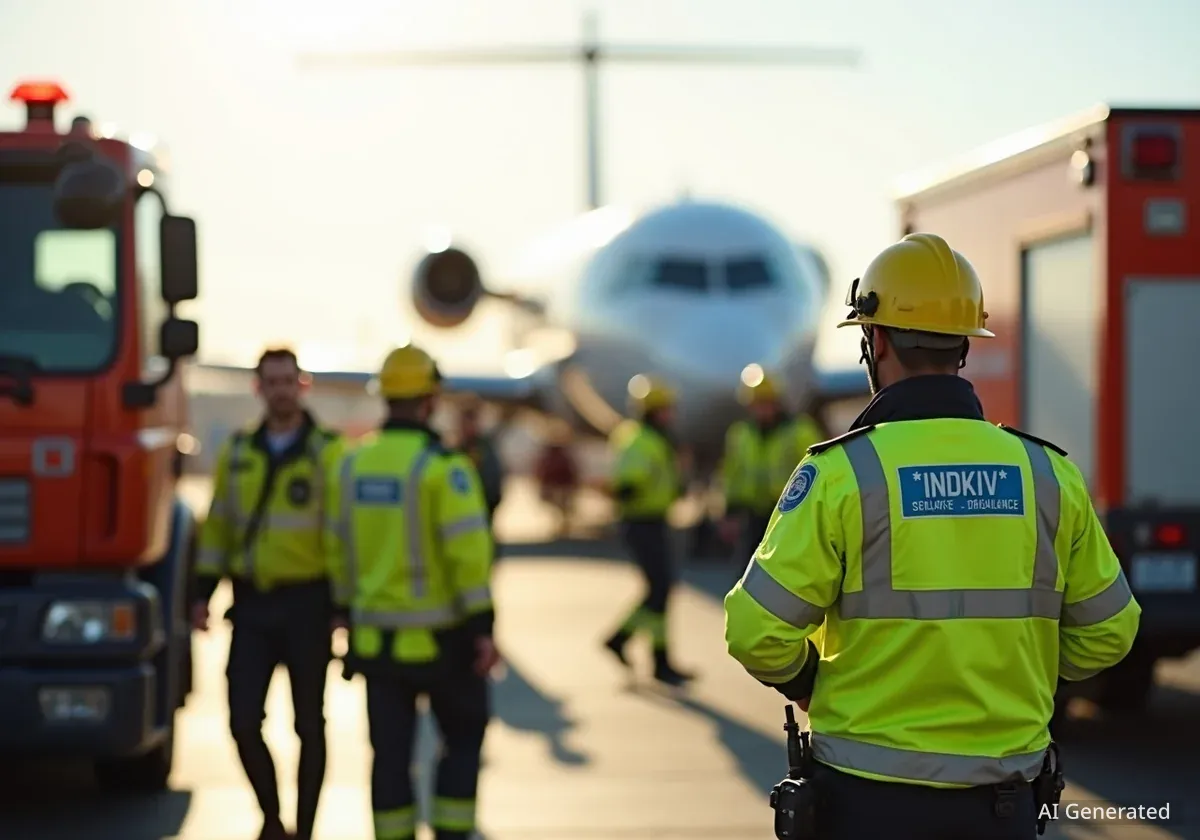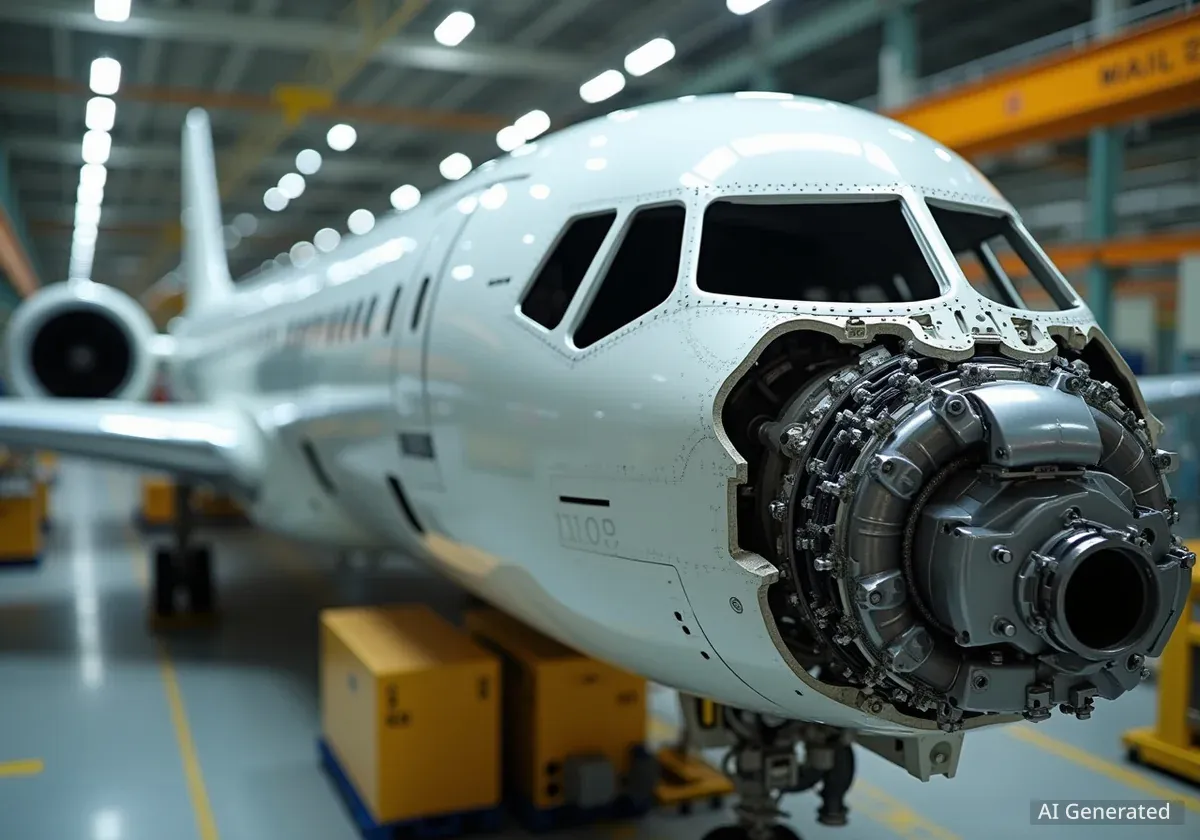An American Airlines flight operated by SkyWest returned to Omaha's Eppley Airfield on Monday after pilots mistakenly believed someone was attempting to breach the cockpit. The incident, which occurred less than 40 minutes after takeoff, was ultimately attributed to a misunderstanding involving the aircraft's intercom system.
Key Takeaways
- American Airlines flight 6469 returned to Omaha due to a cockpit security scare.
- Pilots mistook static on an accidentally-left-on intercom for an attempted breach.
- The flight was operated by regional carrier SkyWest using an Embraer ERJ 175.
- No actual security threat or breach occurred on the aircraft or at the airport.
Misunderstanding Triggers Return to Airport
The flight, American Airlines Flight 6469, departed from Omaha for Los Angeles. Shortly after takeoff, pilots reported what they perceived as an attempt to gain unauthorized access to the cockpit. This immediately initiated a security protocol, leading to the decision to return to the departure airport.
An American Airlines spokesperson later clarified the situation. The intercom system, used by pilots and flight attendants for internal communication, had been left on inadvertently. The pilots heard static sounds through this open channel. They interpreted these sounds as evidence of someone trying to force their way into the cockpit.
Flight Details
- Airline: American Airlines (operated by SkyWest)
- Flight Number: 6469
- Aircraft Type: Embraer ERJ 175
- Route: Omaha (OMA) to Los Angeles (LAX)
- Incident: Cockpit security scare due to intercom static
Regional Carrier Operating the Flight
The flight was operated by SkyWest, a regional airline that partners with major carriers like American Airlines. SkyWest operates a large fleet of regional jets, providing connections to smaller airports across the United States. The aircraft involved was an Embraer ERJ 175, a common regional jet known for its efficiency and passenger comfort on shorter routes.
Flight tracking website FlightAware confirmed the aircraft type and its rapid return to Omaha. These regional partnerships are a common practice in the aviation industry, allowing larger airlines to expand their network by utilizing smaller aircraft for less-traveled routes.
"The misunderstanding on American Airlines Flight 6469 came about because the intercom that pilots and flight attendants use to speak to each other had been left on by accident," an American Airlines spokesperson stated, explaining the root cause of the incident.
Airport Authority Confirms No Security Incident
Upon the aircraft's return to Eppley Airfield, the Omaha Airport Authority quickly confirmed that there was no security-related incident at the airport itself. Their statements focused on the airport's normal operations and safety protocols. All questions regarding the specific incident on board the aircraft were directed to American Airlines, as is standard procedure for such events.
The swift response from both the airline and airport authorities highlights the strict security measures in place for commercial aviation. While this incident proved to be a false alarm, the protocols ensured that any potential threat was treated with the utmost seriousness until proven otherwise.
Aviation Security Protocols
Aviation security protocols are designed to prevent unauthorized access to aircraft, especially the cockpit. Following the events of September 11, 2001, cockpit doors were reinforced, and procedures for communication and access were significantly tightened. Pilots are trained to treat any perceived threat to the cockpit as a critical security incident.
Passenger Safety Remains Top Priority
Despite the alarm, all passengers and crew on American Airlines Flight 6469 remained safe. The decision to return to Omaha was a precautionary measure, prioritizing the safety and security of everyone on board. Incidents like this, though rare, underscore the vigilance required in air travel operations.
The airline worked to re-accommodate passengers on subsequent flights to Los Angeles. Such disruptions, while inconvenient, are a necessary part of maintaining the high safety standards expected in modern aviation. The rapid identification and resolution of the issue prevented any prolonged delays or further complications.
Lessons from the Incident
This event serves as a reminder of the intricate systems and human factors involved in flight operations. Even minor technical glitches or procedural oversights, like an intercom left on, can trigger significant responses when safety is paramount. Airlines continuously review and update their procedures to minimize such occurrences and enhance overall operational safety.
The airline industry's commitment to safety means that every potential threat, no matter how small, is investigated thoroughly. This incident, though a false alarm, demonstrates the robust frameworks in place to protect passengers and crew.





